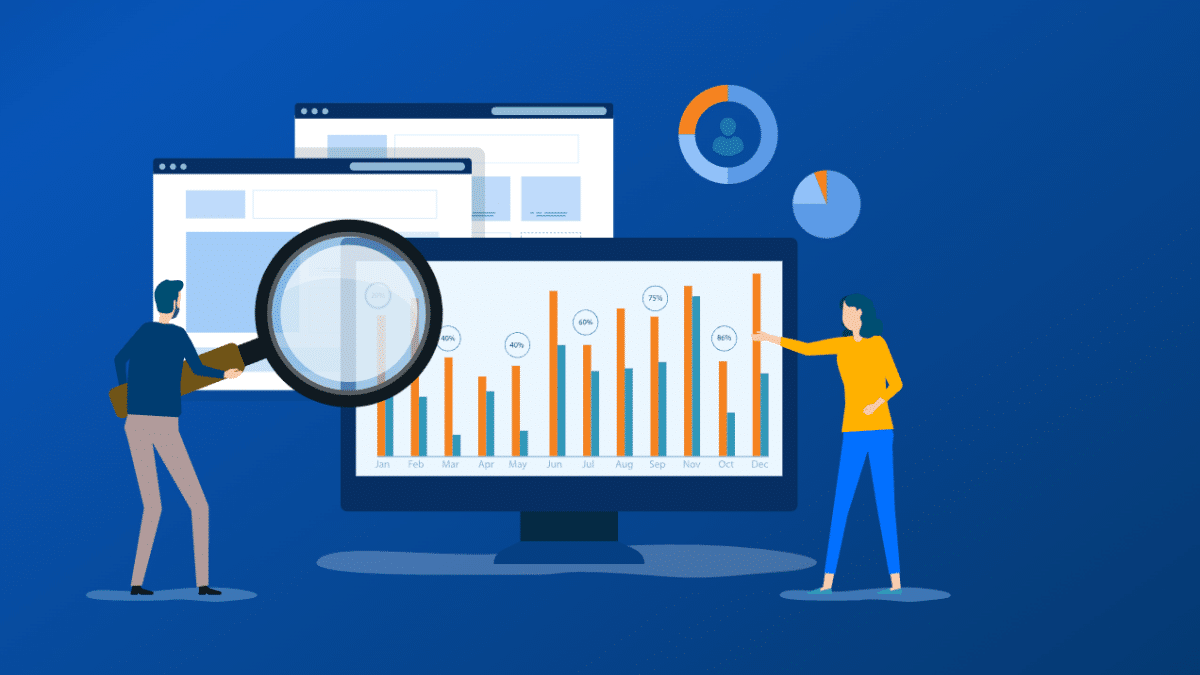In today’s highly competitive retail landscape, staying ahead of the curve requires more than just offering quality products. Retailers are increasingly turning to advanced technologies and data-driven insights to enhance customer experiences, optimize operations, and drive business growth. Among these transformative tools, retail analytics has emerged as a game-changer, revolutionizing the way retailers understand and engage with their customers.
Retail analytics refers to the analyses of data related to inventory levels, consumer demand, sales numbers, and supply chain movement to make informed and strategic decisions regarding marketing and inventory. Intellicus provides its users with a unified view of all the different data sources and multidimensional analytics. A forecast of demand can help optimize all operations relevant to increasing your retail outputs.
The data generated through the retail value chain can include customer transactions, inventory levels, social media interactions, online browsing behavior, and more. Businesses would tremendously benefit from studying and analyzing their retail data and discovering trends, predicting outcomes, and thus, being able to make more profitable business decisions.
Benefits of Retail Analytics
1. Enhancing Customer Experiences –
One of the primary benefits of retail analytics lies in its ability to provide a deep understanding of customer behavior. By analyzing customer data, retailers can identify patterns, preferences, and trends, enabling them to personalize the shopping experience. Retailers can leverage analytics to segment their customer base, develop targeted marketing campaigns, and deliver personalized recommendations and promotions. This approach fosters customer loyalty, drives repeat purchases and boosts overall customer satisfaction.
2. Optimizing Inventory Management –
Retail analytics plays a pivotal role in optimizing inventory levels and reducing stockouts and overstock situations. Retailers can forecast demand more accurately by analyzing historical sales data, market trends, and external factors. These insights enable them to calibrate inventory replenishment strategies, reduce carrying costs, and avoid missed sales opportunities. Additionally, retail analytics helps identify slow-moving products, allowing retailers to take proactive measures such as targeted marketing or discount campaigns to clear inventory.
3. Improving Operational Efficiency –
By analyzing data from various touchpoints, such as point-of-sale systems, supply chain management tools, and employee performance metrics, retailers can identify areas for improvement. This can include optimizing store layouts, adjusting staff scheduling, or identifying training needs for employees. Enhanced operational efficiency leads to cost savings, improved productivity, and a seamless customer shopping experience.
4. Pricing and Promotion Optimization –
Retail analytics allows retailers to analyze pricing strategies, monitor competitor pricing and identify optimal price points for their products. Additionally, analytics can help retailers evaluate the effectiveness of promotional campaigns they have launched, measure the return to investment (ROI), and optimize marketing spend. By fine-tuning pricing and promotion strategies, retailers can maximize revenue and profitability.
5. Improve Supply Chain Efficiency –
Efficient supply chain management is crucial for retailers to meet customer demands while minimizing costs. Retail analytics enables real-time monitoring and analysis of supply chain operations, including procurement, warehousing, and logistics. Retailers can streamline their supply chain processes, reduce costs, and enhance overall operational efficiency through the optimization of routes and improvement in inventory flow.
Features within Retail Analytics
1. Sentiment Analysis –
Retailers can utilize sentiment analysis techniques on social media, customer reviews, and feedback to gauge customer sentiment towards their brand, products, and services. By understanding customer sentiment, retailers can identify areas for improvement, address customer concerns and enhance brand reputation.
2. Predictive Analytics and Forecasting –
Another powerful application of retail analytics is predictive analytics and forecasting. Retailers can predict future trends and behaviors by utilizing historical data and applying advanced statistical models. Predictive analytics enables retailers to anticipate customer demands, optimize pricing strategies, and plan inventory levels accordingly. It also assists in identifying emerging market trends, facilitating proactive decision-making to stay ahead of competitors. By accurately forecasting demand, retailers can minimize risks, optimize resource allocation, and make data-driven decisions to maximize profitability.
3. Omnichannel Analytics –
It has become imperative for retailers to conduct omnichannel operations. Retail analytics can make creating an omnichannel shopping experience for customers easier because it can provide insights into consumer behavior across multiple channels.
4. The Role of Artificial Intelligence and Machine Learning –
Artificial Intelligence (AI) and Machine Learning (ML) are integral components of retail analytics. These technologies enable retailers to process vast amounts of data quickly, uncover complex patterns, and generate actionable insights. AI-powered recommendation engines, chatbots, and virtual assistants enhance the shopping experience by providing personalized product recommendations, answering customer queries, and offering real-time assistance. ML algorithms can also analyze data from multiple sources to identify fraud patterns, enhance security measures, and detect anomalies.
Conclusion
The significance of retail analytics lies in its ability to provide enhanced customer insights, optimize inventory management, and fine-tune pricing and promotion. In this data-driven era, retail analytics is no longer a luxury but a necessity for retailers aiming to thrive in the competitive marketplace. Those who embrace retail analytics will gain a significant competitive advantage and pave the way for sustained growth and success.

